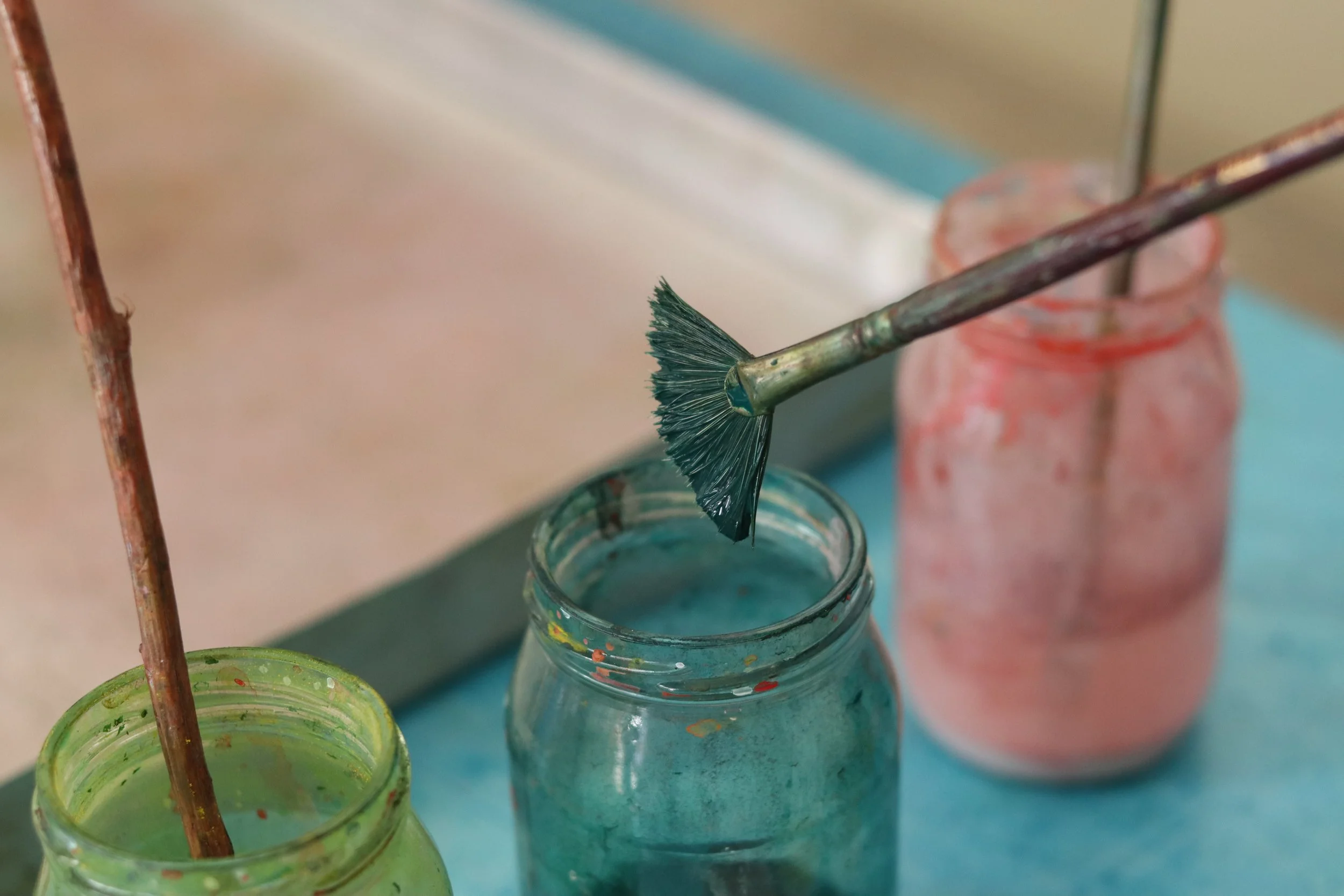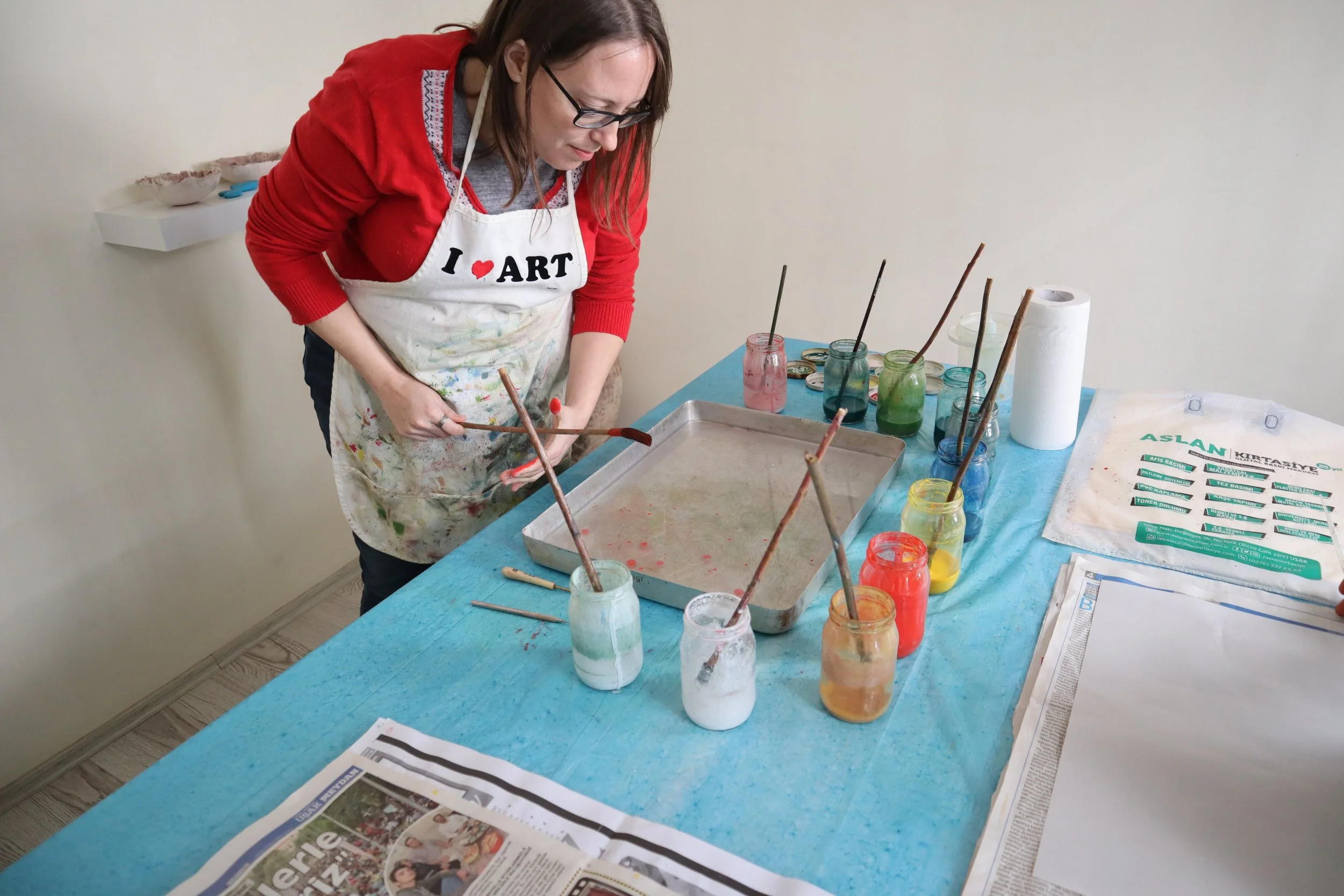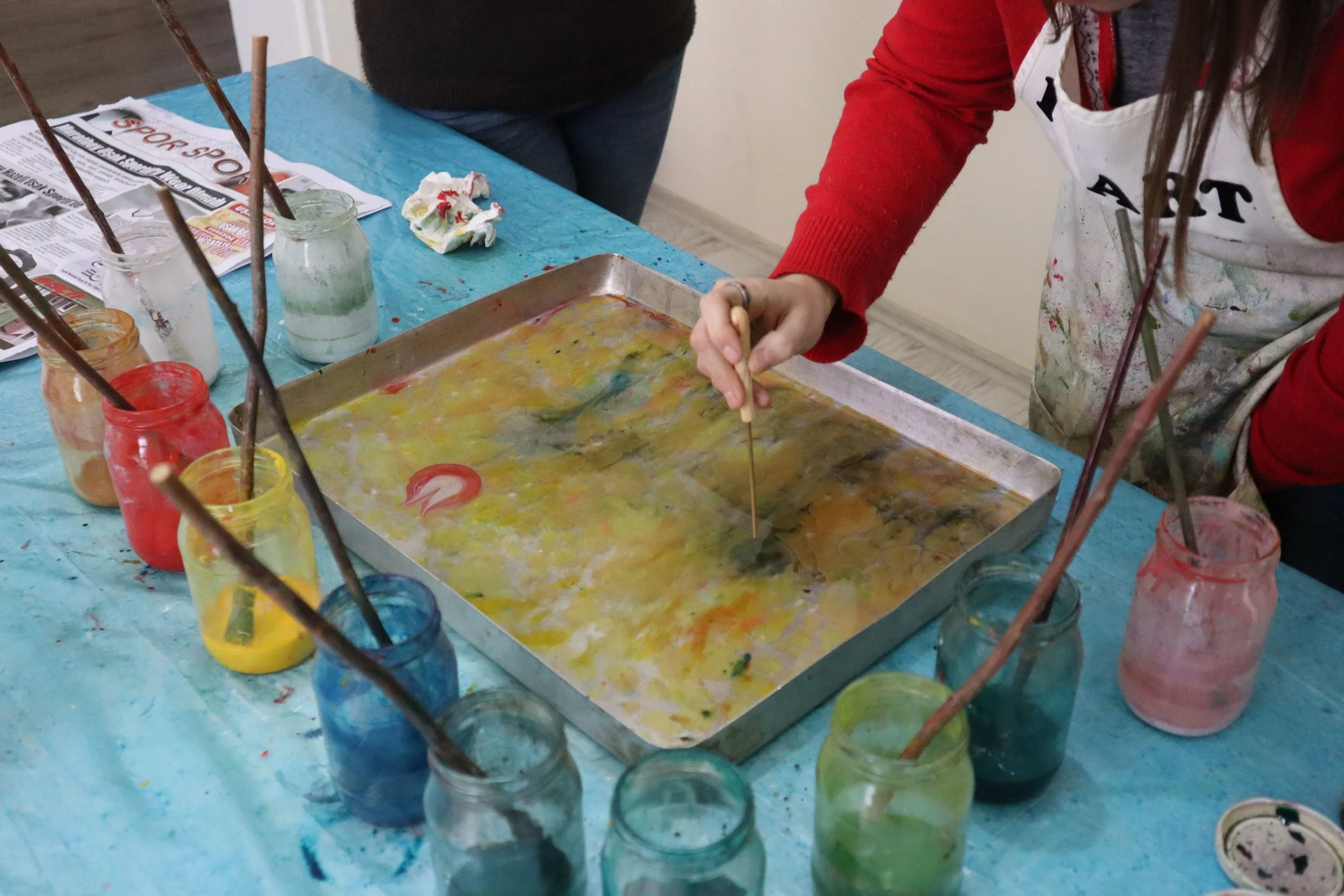The Art of Turkey: Ebru
Patience is hard to come by in our fast-paced world. We want everything right now, whether that’s a latte from Starbucks or a YouTube video download. I confess that “patient” and “methodical” are not words one could use to describe me! Yet those are exactly the traits required for doing ebru, a traditional, paper marbling art form in Turkey.
Recently Leslie and I got the chance to visit an art studio, where our friend Candace is learning about and creating ebru pieces. The owner of the studio let us experiment with her materials to create some artwork of our own.
Creating ebru requires multiple steps of waiting. First, the artist has to prepare their materials. A gummy substance called kitre is added to filtered water and allowed to sit for 3 days. At the end of that time, the mixture is poured into a shallow pan. The paint also has to be prepared a certain way. It is mixed with ox gall (yuck!) to aid its spread on the surface of the kitre water. We were told that both the water mixture and the paint are sensitive to outside weather and temperature. If they get too cold or hot, the process won’t work and the artist has to start all over.
Once the materials are prepped, the second step is to transfer the paint to the water in the pan. We were shown how to flick paint from horsehair brushes into the pan by knocking the handle of the brush against our hand. This created spatters of color on the surface of the water. A slow, methodical approach yields better results, as knocking the brush too hard or too quickly can result in paint going everywhere but where you want it to go! I learned this the hard way. Leslie, on the other hand, excelled at this part. She danced and flicked paint in rhythmic time to some sort of melody in her head—slow and steady. Then we waited again, watching the paint spots slowly expand over the surface.
Leslie had a lot of fun!
I had to concentrate a bit more
Candace wielded her brushes with expertise
After all of the colors have been added, the artist uses an awl to manipulate the colors on the surface. We were shown how to create basic, overall patterns in the paint. Different patterns of movement yield different results. The awl can be drawn through the water diagonally, back and forth, up and down, in a swirl pattern, or all of the above. Again, slow and steady ensures consistent patterns.
Once the desired pattern has been completed, the artist carefully lowers a sheet of paper onto the surface of the water. While being careful to not let the paper be completely submerged, the artist makes sure that the entire paper has come into contact with the paint.
Finally, the artist pulls the paper slowly toward herself, slides it over the pan’s edge to scrape off excess liquid, and flips it over to reveal the result of all of the waiting—a brightly colored, beautifully marbled pattern. This final step was so stressful for me! After all the time taken to prepare and manipulate the design, I hated the thought that in a moment it could be ruined by my impatient, heavy hand. The first design I made I tried to pull out myself, but I just couldn’t manage. The edges got smeared, so for my second design I let Candace pull out the paper for me.
Leslie and I were shown the very basics of how this art form works, but those who are experts at creating ebru can create quite complicated designs. At the end of our time Candace demonstrated one of the most popular ebru designs here in Turkey—an Ottoman tulip. We were fascinated at how she expertly flicked the paint to specific places and in specific amounts to create the right dimensions for the flower. While I loved learning more about this art form, my natural hurried ways make me think I have a lot of patience to learn before I can improve!
Thank you to Elvan Besrek for instructing us in the basics of this beautiful art, for a delicious cup of coffee, and for an overall warm, enjoyable afternoon in your workshop! www.instagram.com/elvanbesrek_sanatatolyesi
For Further Reading:
https://mymodernmet.com/what-is-ebru-art-definition/
https://www.milliyetemlak.com/dergi/ebru-sanati/
TO OUR FRIENDS IN THE WEST, KEEP LOOKING EAST!
Ginny Lou Henley
Ginny Lou is a co-founder of West2East. Originally from Alabama, Ginny Lou has called Turkey home for the past nine years. To read more about her, click here.




















